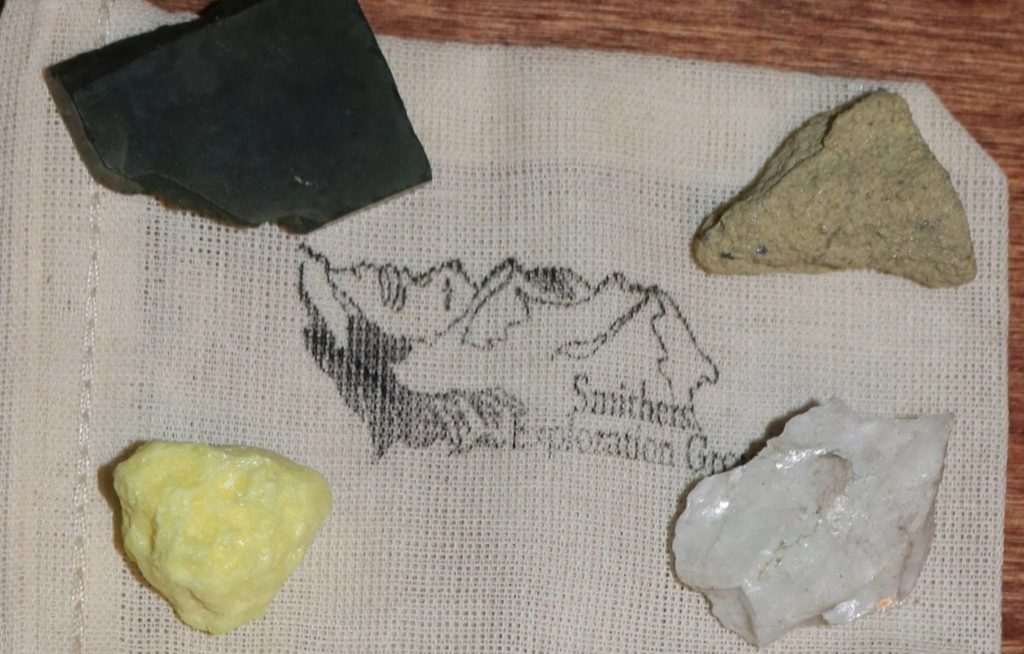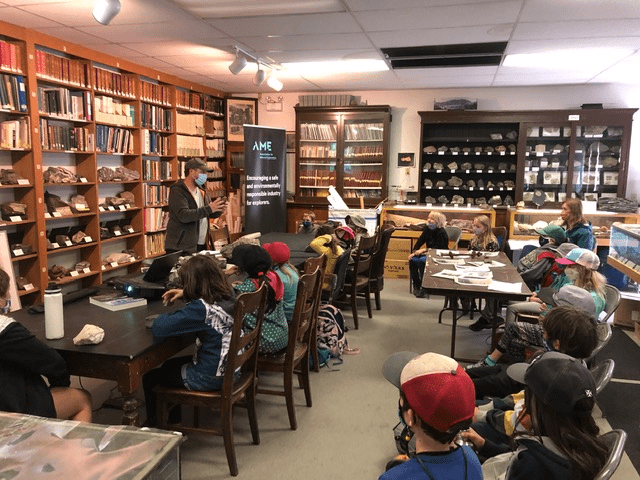Despite travel restrictions and gathering limitations due to the pandemic, British Columbia’s regional exploration groups found engaging ways to reach out and connect with the public in 2020 and 2021.
Regional groups have always been integral to the work that AME does, helping us spread messages to members and promoting our industry to children and adults across the province.
Each year, AME provides funding to regional exploration and specialist groups to support their efforts to engage with as many people around the province as possible. In an unusual year with reduced budgets, many of the groups we support adapted their usual activities to be virtual. As the province slowly reopened, many groups were able to introduce some small in-person activities.
Join us for a quick tour around the province and see how our regional partners connected with the public.
Virtual Scavenger Hunt in Kamloops
Kamloops Exploration Group (KEG) were able to pull together the online resources needed to make many of their outreach activities virtual. Notably, in 2021, KEG held eight lectures with a live attendance of 496 people, coupled with additional on-demand options for attendees.
During Mining Month, KEG held a Virtual Scavenger Hunt and had 67 families participate. The Virtual Scavenger Hunt took participants to interesting places around Kamloops, BC without them having to leave their home. The families enjoyed being transported to interesting geological and/or mining sites.
Smithers ‘Geocrawl’
Smithers Exploration Group (SEG) were able to host several events and distribute some of their own media content through editorials and advertisements.
For SEG, the best opportunity for outreach in 2021 was in conjunction with BC Mining Month. These included the SEG Geocrawl in partnership with Smithers Tourism, an event which allows people to take an educational tour of downtown Smithers at their own leisure and learn how mining influence their daily life. Additionally, SEG published public awareness advertisements in the Smithers Interior News plus a Smithers Interior News Mining special, whereby SEG prepared a summary of the northwest region of the Provincial Overview of Exploration and Mining in British Columbia 2020 intended for the general public.
Interpretive Art in the Kootenays
The Chamber of Mines of Eastern British Columbia (CMEBC) had a busy year hosting schools and giving them presentations on the history of mining in the Kootenays and its local minerals, as well as visits from tourists, prospectors and the general public.
At the beginning of the year, the Chamber assisted artist Brian Lye with his interpretive art installation at the Oxygen Art Gallery. Lye’s work looks at crystalline minerals across scientific, mining and healing fields and specifically investigates the human and natural relation to crystals through discussion-based research.
Below BC’s Digital Museum
Below BC continued to build their Digital Museum and Online Resources while increasing the strength and scope of the website, which provided a broader range of online resources. This included creating online modules for educational institutions to use in lieu of fieldwork during the COVID-19 lockdowns.
Below BC were able to visit isolated geographic features and archives that are not available to the public and bring them online. This is important not only for public access but also the continued outreach of these often-smaller institutions. Throughout the year, Below BC’s Digital Museum has seen over 20,000 visits to the site with over 70,000 pages viewed.
Paleontology for All in the East Kootenays
The East Kootenay Chamber of Mines (EKCM) were able to hold a variety of outreach events throughout the year including the Boys and Girls Club where 40 children aged between 7 and 12 years old were able to learn about the local East Kootenay Geology and Paleontology.
They hosted an eight-week Junior Paleontology Summer Program was attended by 192 children aged between 6 and 12 and boasted hands-on projects for children to learn about evolution, the environment and fossils. Finally, EKCM is currently hosting an Adult Paleontology Field School Program which includes visits to local fossil sites and will teach participants the skills needed to locate and identify specimens. This will be attended by 20 adults aged between 20 and 60- years old.

Junior Paleontology Program 
Below BC – Digital Museum 
SEG Geocrawl 
EKCM – School visit



